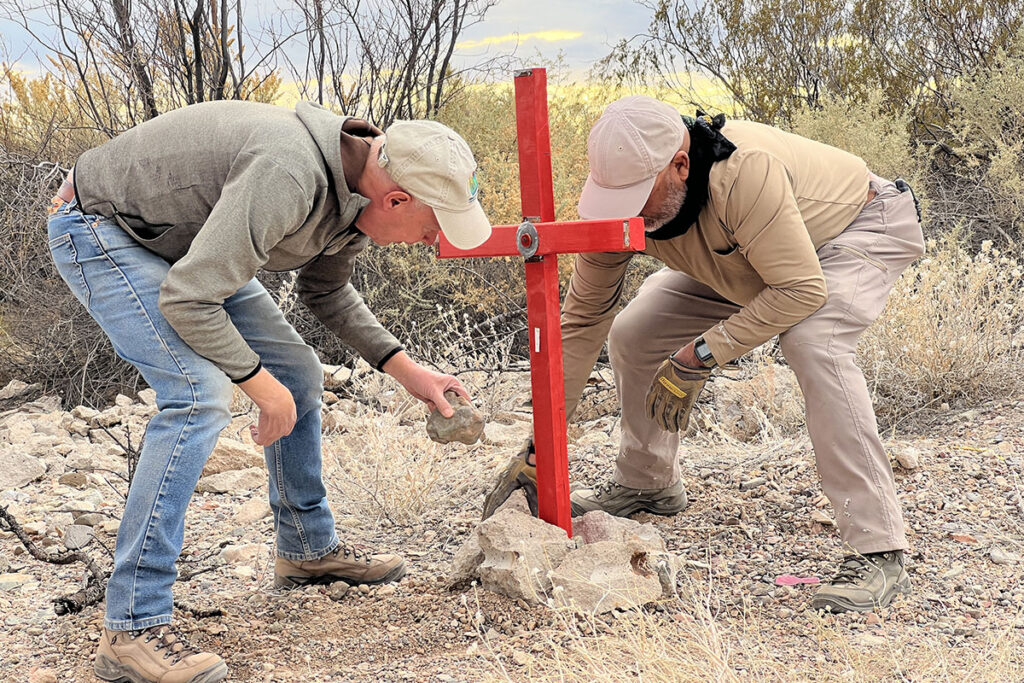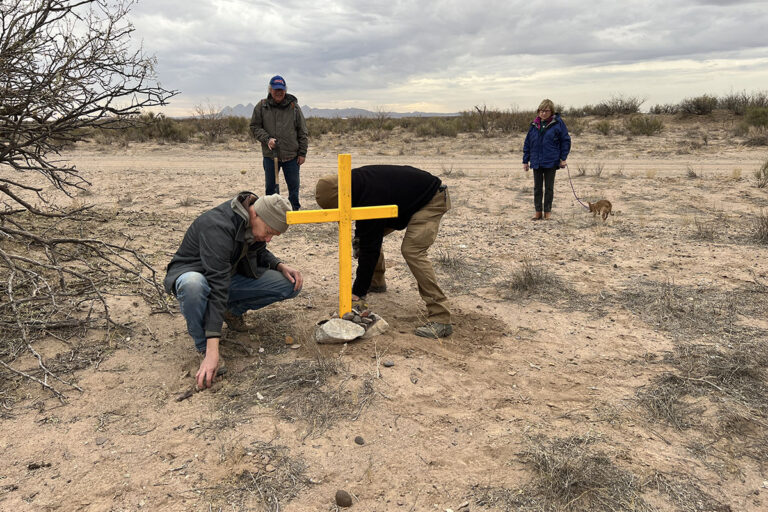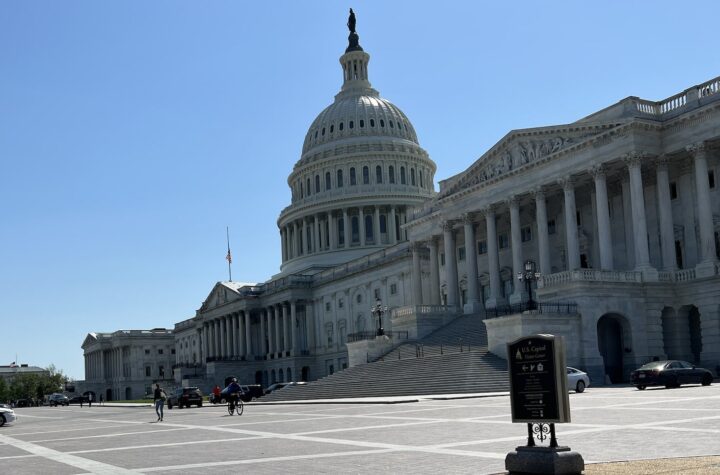
COMMITMENT| Álvaro Enciso hard at work. (Photos/Morgan Smith)
ALVARO ENCISO’S TRAJECTORY
Morgan Smith/ Morgan-smith@comcast.net
Haga click aquí para leer la versión en español
“You leave your country, you leave your language, you leave your family, you leave everything that you knew to come here looking for a better way of life,” says Alvaro Enciso who migrated to the US from a town called Villavicencio in central Colombia when he was 20 with the goal of getting an education. This has been a much more complicated journey than he would have anticipated.
He served in the US Army and 14 months in Vietnam, went to college on the GI Bill, got a BA in Cultural Anthropology at Queens College, earned graduate degrees at Towson University and worked for the Department of Health and Human Services in Washington- Baltimore area as an analyst and expert in Hispanic culture. Eventually in the late 1990s he decided to become an artist and moved to New Mexico.
“I don’t like the word artist,” he says. “because I don’t know if I am one or not. The word artist is loosely used, you know, anyone can be an artist.”
He then moved to Tucson in 2011 and saw an article about a retired Marine and Methodist preacher who was taking water, medical supplies and blankets to the border to help migrants.
Thinking of his own migrant background, he soon began working with the Tucson Samaritans, a non-profit formed in 2002 that takes water, food and medical assistance into the desert area south of Tucson. Initially he would hike out to the sites where bodies had been found and “stand there and see if there was anything there, a vestige of what happened there, the suffering and the disappointment and the failure and everything.”
Then he realized that he wanted to make “the invisible visible. So, I needed to give these people presence.” The concept of placing crosses at the sites was a complicated one, however. The cross “is a symbol of finality,” he says. “The Romans used to make crosses, big ones, to kill people.” He continues.” I was a little reluctant because I didn’t want to be seen as some kind of a Christian fanatic putting crosses out there.” He sees the cross as a “universal symbol” and not a “religious cross.”
“It was nothing more than a geometric equation. You know, a vertical one on a horizontal line. The vertical line means that you’re still alive, still walking. And the horizontal line means that you’re dead. And where those two lines meet, that’s the point where the tragedy took place.”
Alvaro makes the crosses himself and paints them different colors with donated paint. In the last decade, he has placed over 1,400 in the Arizona desert, and gets the location from the medical examiner in Tucson with whom he has a good relationship. He goes every Tuesday with his team, using a 4-wheel high clearance vehicle provided by the Tucson Samaritans.
I had a chance to meet him in Tucson in April and he agreed to contact me when he came to New Mexico to start placing crosses here. Finally, we met in tiny Columbus, New Mexico (pop. 1,500) on the afternoon of December 19. Columbus is just two miles from the border and the border town of Palomas, Mexico.
With him were the team members who have been working with him in Arizona – the young Bryce Peterson who is a genius at finding the sites, most of which are in remote areas; David Whitman who moved to Arizona from New York city several years ago and met Alvaro through the Tucson Samaritans, and Peter Lucero who has been working with Alvaro for five years.
My wife, Sherry was with me. For the last five years, we have been assisting migrant shelters in Juárez and Palomas, as well as El Paso and Deming, New Mexico. This would be a very different experience, however. We followed Alvaro’s team to the first site where the body of a 34-year-old woman from Guatemala had been found. She had been raped and murdered and then dumped there just east of Columbus.
The team moved quickly. Alvaro dug a hole in the soft dirt and Peter placed the cross. Then they poured water in the hole, added a quick drying cement, then sand. Alvaro made sure the cross was aligned properly. Then they each looked for stones to place around the cross. “This is an important step,” David said to me, “because we are alone with our thoughts when we go to look for the rocks.” Peter would place a rosary on the cross.

TRAJECTORY| A soldier artist.
The second stop would be for a 24-year-old man who had died of exposure.
The third was on the edge of the highway between Deming and Columbus, a boring stretch of road that I have driven dozens of times without ever thinking of death.
On September 18, 2021, however, an accident occurred here when a Border Patrol vehicle was chasing a van in which there were ten migrants.
Two were killed, one from Brazil and one from Ecuador so two crosses were placed. While I thought of the two deaths, Alvaro said, “Imagine the others, the injuries they must have suffered.” We spent the night in the Comfort Inn in Deming and met for breakfast the next morning before daylight. The plan was to find at least three more sites.
Then Alvaro and his team would return to Arizona and Sherry and I would go back to Santa Fe. Our first stop that morning was just off what is called Sunshine Road. A Brazilian woman had been traveling with a group of Brazilians, couldn’t keep up and died. It was a bitter cold morning with an overcast sky, a day when you couldn’t imagine the heat that must have overpowered her.
The second stop was for a 24-year-old man who died on August 29, 2021 but his nationality was unknown. We then drove west from Deming on a service road that paralleled the very busy Highway I-10, finally turning off near a large truck stop and heading south on a dirt road. Stopping, Bryce indicated that this site would be about a quarter mile through the desert.
This is barren but starkly beautiful country yet with the temperature about 52 degrees, this was not the reality migrants face during the summer when it will typically be over 100 degrees. The man whose body was found there was never identified; although he was surely from Latin America, he is referred to as John Doe. As Alvaro dug the small hole for the cross, I realized that we were less than a half mile from the highway and the truck stop. Of course, the man who died didn’t know this.

Where Dreams Die
He couldn’t have heard the heavy truck traffic on I-10 or seen the truck stop. But to recognize that he came thousands of miles only to die perhaps twenty minutes from safety was heart wrenching. In these last five years, Sherry and I have met with hundreds of migrants – in various shelters, camped on the riverbank between El Paso and Juárez, or living on the streets.
Most are exhausted from their journeys and unsure where they will end up. But they are also optimistic and full of hope that they can start decent and safe lives in our country. They exude an enthusiasm about our country that few Americans can emulate.
These two days with Alvaro and his team, however, showed the other side of these brutal experiences.
Whether it was standing in the bitter cold or slogging through the barren desert as Alvaro, Peter, David, and Bryce placed these crosses, I felt I was helping give these migrants a last gesture of respect. To quote Alvaro once again from an interview of him in Borderless Magazine, “So on Tuesdays, that’s the day I go to church. It’s the day where I atone, the day where I grieve.
And the day where I’m doing something for a stranger whom I never knew. But I consider him part of my life because I am going to where he or she died. And marking that location. And that desert will have a memorial for him or her that will be there for many years.” Alvaro has named his project, “Donde Mueren los Suenos” or “Where Dreams Die.”
Now several weeks after our placing of the crosses in the desert, the memory of these deaths hangs over me like a huge dark cloud. What to do? The answer is simple. Tomorrow I will be leaving for the border again, my car packed with donated shoes. A trip to help the living. But I will be passing the two crosses between Deming and Columbus; I will be thinking of those for whom the dream died.
You may also like:
A Call to Continue the Work Against Workplace Discrimination
Direct Route Launched Between Denver and Monterrey
Denver would cut $180 million from its budget due to the migrant crisis






otras noticias
Guest Columnist – Renewing tax cuts is an easy win for everyone
Bus Rapid Transit is Coming to Federal Boulevard
The Edge of Lowry Complex in Aurora Permanently Closed